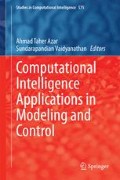Abstract
One of the major challenges facing requirements prioritization techniques is accuracy. The issue here is lack of robust algorithms capable of avoiding a mismatch between ranked requirements and stakeholder’s linguistic ratings. This problem has led many software developers in building systems that eventually fall short of user’s requirements. In this chapter, we propose a new approach for prioritizing software requirements that reflect high correlations between the prioritized requirements and stakeholders’ linguistic valuations. Specifically, we develop a hybridized algorithm which uses preference weights of requirements obtained from the stakeholder’s linguistic ratings. Our approach was validated with a dataset known as RALIC which comprises of requirements with relative weights of stakeholders.
Access this chapter
Tax calculation will be finalised at checkout
Purchases are for personal use only
References
Ahl, V.: An experimental comparison of five prioritization methods-investigating ease of use, accuracy and scalability. Master’s thesis, School of Engineering, Blekinge Institute of Technology, Sweden (2005)
Al-Sultan, K.S.: A Tabu search approach to the clustering problem. Pattern Recogn. 28(9), 1443–1451 (1995)
Aritra, C., Bose, S., Das, S.: Automatic Clustering Based on Invasive Weed Optimization Algorithm: Swarm, Evolutionary, and Memetic Computing, pp. 105–112. Springer, Berlin (2011)
Babar, M., Ramzan, M., and Ghayyur, S.: Challenges and future trends in software requirements prioritization. In: Computer Networks and Information Technology (ICCNIT), pp. 319–324, IEEE (2011)
Berander, P., Svahnberg, M.: Evaluating two ways of calculating priorities in requirements hierarchies—An experiment on hierarchical cumulative voting. J. Syst. Softw. 82(5), 836–850 (2009)
Chang, D., Xian, D., Chang, W.: A genetic algorithm with gene rearrangement for K-means clustering. Pattern Recogn. 42, 1210–1222 (2009)
Ching-Yi, C., and Fun, Y.: Particle swarm optimization algorithm and its application to clustering analysis. In IEEE International Conference on Networking, Sensing and Control (2004)
Das, S., Abraham, A., Konar, A.: Automatic clustering using an improved differential evolution algorithm. IEEE Trans. Syst. Man Cybern. Part A Syst. Hum. 38(1), 218–237 (2008)
Das, S., Abraham, A., and Konar, A.: Automatic hard clustering using improved differential evolution algorithm. In: Studies in Computational Intelligence, pp. 137–174 (2009)
Demsar, J.: Statistical comparison of classifiers over multiple data sets. J. Mach. Learn. Res. 7, 1–30 (2006)
Greer, D., Ruhe, G.: Software release planning: an evolutionary and iterative approach. Inf. Softw. Technol. 46(4), 243–253 (2004)
Hatamlou, A., Abdullah, S., and Hatamlou, M.: Data clustering using big bang-big crunch algorithm. In: Communications in Computer and Information Science, pp. 383–388 (2011)
Jain, A.: Data clustering: 50 years beyond K-means. Pattern Recogn. Lett. 31(8), 651–666 (2010)
Kao, Y., Zahara, E., Kao, I.: A hybridized approach to data clustering. Expert Syst. Appl. 34(3), 1754–1762 (2008)
Karlsson, L., Thelin, T., Regnell, B., Berander, P., Wohlin, C.: Pair-wise comparisons versus planning game partitioning-experiments on requirements prioritization techniques. Empirical Softw. Eng. 12(1), 3–33 (2006)
Karlsson, J., Olsson, S., Ryan, K.: Improved practical support for large scale requirements prioritizing. J. Requirements Eng. 2, 51–67 (1997)
Karlsson, J., Wohlin, C., Regnell, B.: An evaluation of methods for prioritizing software requirements. Inf. Softw. Technol. 39(14), 939–947 (1998)
Kassel, N.W., Malloy, B.A.: An approach to automate requirements elicitation and specification. In: Proceeding of the 7th IASTED International Conference on Software Engineering and Applications. Marina Del Rey, CA, USA (2003)
Kennedy, J., Eberhart, R.: Particle swarm optimization. In: Proceedings of IEEE International Conference on Neural Networks (1995)
Kobayashi, M., Maekawa, M.: Need-based requirements change management. In: Proceeding of Eighth Annual IEEE International Conference and Workshop on the Engineering of Computer Based Systems, pp. 171–178 (2001)
Krishna, K., Narasimha, M.: Genetic K-means algorithm. IEEE Trans. Syst. Man Cyber. Part B (Cyber.) 29(3), 433–439 (1999)
Lim, S.L., Finkelstein, A.: takeRare: using social networks and collaborative filtering for large-scale requirements elicitation. Softw. Eng. IEEE Trans. 38(3), 707–735 (2012)
Maulik, U., Bandyopadhyay, S.: Genetic algorithm-based clustering technique. Pattern Recogn. 33(9), 1455–1465 (2000)
Moisiadis, F.: The fundamentals of prioritizing requirements. In: Proceedings of Systems Engineering Test and Evaluation Conference (SETE 2002) (2002)
Perini, A., Susi, A., Avesani, P.: A Machine Learning Approach to Software Requirements Prioritization. IEEE Trans. Software Eng. 39(4), 445–460 (2013)
Qin, A.K., Suganthan, P.N.: Kernel neural gas algorithms with application to cluster analysis. In: Proceedings-International Conference on Pattern Recognition (2004)
Ramzan, M., Jaffar, A., Shahid, A.: Value based intelligent requirement prioritization (VIRP): expert driven fuzzy logic based prioritization technique. Int. J. Innovative Comput. 7(3), 1017–1038 (2011)
Selim, S., Alsultan, K.: A simulated annealing algorithm for the clustering problem. Pattern Recogn. 24(10), 1003–1008 (1991)
Sung, C.S., Jin, H.W.: A tabu-search-based heuristic for clustering. Pattern Recogn. 33(5), 849–858 (2000)
Storn, R., Price, K.: Differential Evolution—A Simple and Efficient Adaptive Scheme for Global Optimization over Continuous Spaces, TR-95-012. Int. Comput. Sci. Inst., Berkeley (1995)
Tonella, P., Susi, A., Palma, F.: Interactive requirements prioritization using a genetic algorithm. Inf. Softw. Technol. 55(2013), 173–187 (2012)
Thakurta, R.: A framework for prioritization of quality requirements for inclusion in a software project. Softw. Qual. J. 21, 573–597 (2012)
Acknowledgment
The authors appreciate the efforts of the Ministry of Science, Technology and Innovation Malaysia (MOSTI) under Vot 4S062 and Universiti Teknologi Malaysia (UTM) for supporting this research.
Author information
Authors and Affiliations
Corresponding author
Editor information
Editors and Affiliations
Rights and permissions
Copyright information
© 2015 Springer International Publishing Switzerland
About this chapter
Cite this chapter
Achimugu, P., Selamat, A. (2015). A Hybridized Approach for Prioritizing Software Requirements Based on K-Means and Evolutionary Algorithms. In: Azar, A., Vaidyanathan, S. (eds) Computational Intelligence Applications in Modeling and Control. Studies in Computational Intelligence, vol 575. Springer, Cham. https://doi.org/10.1007/978-3-319-11017-2_4
Download citation
DOI: https://doi.org/10.1007/978-3-319-11017-2_4
Published:
Publisher Name: Springer, Cham
Print ISBN: 978-3-319-11016-5
Online ISBN: 978-3-319-11017-2
eBook Packages: EngineeringEngineering (R0)

